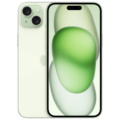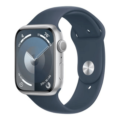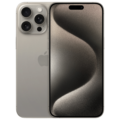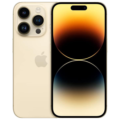- Home
- Apple Devices
- Apple iPhone
- Apple iPhone 6S Plus Specifications: A Complete Guide
Apple iPhone 6S Plus Specifications: A Complete Guide





SPECIFICATIONS
General
| Status | Available |
| Announced |
2015, September |
| Released | 16 September, 2025 |
| Model | iPhone 6s Plus (A1634, A1687, A1690, A1699) |
| Price Apple iPhone Price in USA, UK, Canada, Australia, India, Pakistan, China, Japan and Europe | $183 - $243 || £275 - £525 || 65000PKR - 73000 PKR || ₹39,975 - ₹81,451 |
Network
| Technology |
GSM / CDMA / HSPA / EVDO / LTE |
| 2G Network |
GSM 850 / 900 / 1800 / 1900 CDMA 800 / 1700 / 1900 / 2100 |
| 3G Network |
HSDPA 850 / 900 / 1700 / 1900 / 2100 CDMA2000 1xEV-DO |
| 4G Network |
LTE band 1(2100), 2(1900), 3(1800), 4(1700/2100), 5(850), 7(2600), 8(900), 12(700), 13(700), 17(700), 18(800), 19(800), 20(800), 25(1900), 26(850), 28(700), 29(700), 30(2300) - A1633 LTE band 1(2100), 2(1900), 3(1800), 4(1700/2100), 5(850), 7(2600), 8(900), 12(700), 13(700), 17(700), 18(800), 19(800), 20(800), 25(1900), 26(850), 28(700), 29(700), 30(2300), 38(2600), 39(1900), 40(2300), 41(2500) - A1634 |
| Speed | HSPA 42.2/5.76 Mbps, LTE Cat6 300/50 Mbps, EV-DO Rev.A 3.1 Mbps |
| GPRS GPRS (General Packet Radio Service) is a packet oriented mobile data service on the 2G and 3G cellular communication system's global system for mobile communications (GSM), Generally, GPRS is used for the purpose of wireless data transfer, such as sharing pictures and videos or browsing the Internet via a mobile phone connection. | |
| EDGE EDGE (Enhanced Data GSM Environment) is a wireless network technology generally considered the next step in the 2G network offers data transfer rates up to four times faster than ordinary GSM networks, Generally, EDGE is used for the purpose of wireless data transfer, such as sharing pictures and videos or browsing the Internet via a mobile phone connection. |
Body
| Dimensions | 158.2 x 77.9 x 7.3 mm (6.23 x 3.07 x 0.29 in) |
| Weight | 192 g (6.77 oz) |
| Colors |
Space Gray, Silver, Gold, Rose Gold |
| SIM SIM (Subscriber Identity Module) is a small card that contains mobile network subscriber's account information. This allows the phone using the card to attach to a mobile network. The SIM card is most commonly associated with GSM and UMTS mobile networks. Moving a SIM card from one phone to another allows a subscriber to switch mobile phones without having to contact their mobile network carrier. SIM cards can also be used by a phone to store limited amounts of data, such as phone numbers and text messages. | Nano SIM |
Body
| Dimensions | 158.2 x 77.9 x 7.3 mm (6.23 x 3.07 x 0.29 in) |
| Weight | 192 g (6.77 oz) |
| Colors |
Space Gray, Silver, Gold, Rose Gold |
| SIM SIM (Subscriber Identity Module) is a small card that contains mobile network subscriber's account information. This allows the phone using the card to attach to a mobile network. The SIM card is most commonly associated with GSM and UMTS mobile networks. Moving a SIM card from one phone to another allows a subscriber to switch mobile phones without having to contact their mobile network carrier. SIM cards can also be used by a phone to store limited amounts of data, such as phone numbers and text messages. | Nano SIM |
Display
| Display Type Display Technology => A number of display technologies and types used in mobile phones => TFT (Thin Film Transistor), IPS (In-Place Switching), OLED (Organic Light Emitting Diode), AMOLED (Active-Matrix Organic Light-Emitting Diode), Super AMOLED (an even advanced version of AMOLED), Resistive Touchscreen (Resistive touchscreens contain two layer of conductive material with a very small gap between them which acts as a resistance), Capacitive Touchsceen (Capacitive touchscreen technology consists of a layer of glass coated with a transparent conductor) | LED-backlit IPS LCD, capacitive touchscreen, |
| Size | 5.5 inches (~67.7% screen-to-body ratio) |
| Display Colors Display Colors is refers to the number of different shades of colors that the screen is capable of displaying => 64K colors, 256K colors and 16 million colors, Obviously 16M is highest available range of colors and better than others. | 16M colors |
| Resolution | 1080 x 1920 pixels |
| Pixel Density Pixel Density (PPI) is refers to the concentration of pixels on a particular display, measured in pixels per inch (ppi). Pixel density is calculated by dividing the diagonal pixel resolution of a display by its diagonal size, higher pixel density better display quality. | 401 ppi pixel density |
| Display Protection Display Protection => Gorilla Glass is a special alkali-aluminosilicate glass shield with exceptional damage resistance that helps protect mobile displays from scratches, drops, and bumps of everyday use, It is always better to go for a smartphone with Gorilla Glass for that added protection and peace of mind. | Ion-strengthened glass, oleophobic coating |
| Multitouch | |
| Features |
Display Zoom 3D Touch Display |
Camera
| Primary Camera is able to capture photographs and usually videos, The most important characteristics of a camera are the resolution (measured in megapixels), lens focus type (fixed or automatic), higher megapixel cameras are known to capture higher quality photos, but not always a good measurement of the photos quality. | 12 MP, f/2.2, 29mm (standard), 1/3", 1.22µm, PDAF, OIS |
| Video | 1080p@30fps |
| Camera Features |
Face detection, HDR, panorama |
| Selfie Camera | 5 MP, f/2.2, 31mm (standard) |
| Video | 1080p@30fps |
| Camera Features |
Face detection, HDR, panorama |
Software
| Operating System OS => Every computer system run on a base software called Operating System (OS). Operating System controls all basic operations of the computer (such as smartphone, PDAs, tablet computers and other handheld devices). The Operating System allows the user to install and run third party applications (apps), apps are used to add new functionality to the device. | iOS 9, upgradable to iOS 9.3.3, planned upgrade to iOS 13 |
| Browser (Default) | Safari |
Hardware
| Chipset Chipset is a group of integrated circuits designed to perform one or a more dedicated functions, often with real time computing constraints, Popular smartphones are equipped with more advanced embedded chipsets that can do many different tasks depending on their programming. | Apple A9 |
| CPU CPU (Central Processing Unit) mostly known as processors, CPU processes instructions in order to carry out certain functions that make your device operate properly. Processors are often described as the brain of computers, smartphones and tablets, Smartphones and tablets rely on processors to carry out their every task, Processors are an incredibly important factor in selecting any type of computing device, including your smartphone. | Dual-core 1.84 GHz Twister |
| GPU GPU (Graphics Processing Unit) is a single-chip processor designed to rapidly manipulate and alter memory to accelerate the creation of images in a frame buffer intended for output to a display, This includes things such as lighting effects, object transformations, and 3D motion. | PowerVR GT7600 (six-core graphics) |
| RAM (Memory) RAM (Random Access Memory) is a type of computer memory that can be accessed randomly, any byte of memory can be accessed without touching the preceding bytes that allows information to be stored and accessed quickly from random locations. RAM is the most common type of memory found in computer systems, smartphones, tablets and other electronic devices. | 2 GB |
| Internal Storage Internal Storage is a data storage space (flash memory) mostly used in smartphones, tablets and other electronic devices where operating system, apps, music, photos, videos, files and other user data Is stored. | 16/64/128 GB |
| Card Slot Memory Card Slot is a special slot for inserting a memory card. Memory cards allow you to expand the phone's built-in memory, A memory card (sometimes called a flash memory card or a storage card) is a small storage medium used to store data such as text, pictures, audio, and video, for use on small, portable or remote computing devices such as mobile phones, mp3 players, digital cameras. | NO |
| Sensors Sensors are electronic components that detects and responds to some type of input from the physical environment. The specific input could be light, heat, motion, moisture, pressure and location, The output is generally a signal that is converted to use in computing systems, a location sensor, such as a GPS receiver is able to detect current location of your electronic device. |
Fingerprint, accelerometer, gyro, proximity, compass, barometer |
Battery
| Battery Type Battery Type => Cell phones run on various kinds of batteries depending on the manufacturer, phone size or shape and features. There are basically four types of cell phone batteries => Lithium Polymer, Lithium Ion, Nickel Metal Hydride and Nickel Cadmium. | Li-Poly (Lithium Polymer) |
| Capacity Battery Capacity is a measure (typically in Amp-hr) of the charge stored by the battery, and is determined by the mass of active material contained in the battery. The battery capacity represents the maximum amount of energy that can be extracted from the battery under certain conditions. | 2750 mAh battery (10.45 Wh) |
| Placement | Non-Removable |
| Wireless Charging Wireless Charging (Inductive Charging) uses an electromagnetic field to transfer energy between two objects. This is usually done with a charging station. Energy is sent through an inductive coupling to an electrical device, which can then use that energy to charge batteries or run the device. | NO |
| Fast Charging | NO |
| Standby Standby Time is the total amount of time that you can leave your is fully charged, turned on and ready to send and receive calls or data transmissions before completely discharging the battery. | Up to16 Days |
| Talk Time Talk Time is the longest time that a single battery charge will last when you are constantly talking on the phone under perfect conditions, Ambient temperature and highly dependent on the cellular network environment such as the distance to the closest cell network tower. | Up to 24 hours |
| Audio Playback | Up to 80 hours |
| Video Playback | Up to 14 hours |
| Internet Usage | Up to 12 hours |
Media
| Loudspeaker | Yes |
| 3.5mm Jack | |
| FM Radio | NO |
| Features |
16-bit/44.1kHz audio Active noise cancellation with dedicated mic |
Connectivity
| Bluetooth Bluetooth is a wireless communications technology for exchanging data between mobile phones, headsets, computers and other network devices over short distances without wires, Bluetooth technology was primarily designed to support simple wireless networking of personal consumer devices. | v4.2, A2DP, LE |
| Infrared Infrared connectivity is an old wireless technology used to connect two electronic devices. It uses a beam of infrared light to transmit information and so requires direct line of sight and operates only at close range. | |
| Wi-fi Wi-Fi is a popular wireless networking technology using radio waves to provide high-speed network connections that allows devices to communicate without cords or cables, Wi-Fi is increasingly becoming the preferred mode of internet connectivity all over the world. | Wi-Fi 802.11 a/b/g/n/ac, dual-band |
| Wi-fi Hotspot | |
| USB | v2.0, reversible connector |
| GPS GPS The Global Positioning System is a satellite-based radio navigation system, GPS permits users to determine their position, velocity and the time 24 hours a day, in all weather, anywhere in the world, In order to locate your position, your device or GPS receiver must have a clear view of the sky. | Yes, with A-GPS, GLONASS |
| NFC NFC (Near field communication) is a set of standards for smartphones and similar devices to establish peer-to-peer radio communications with each other by touching them together or bringing them into proximity, usually no more than a few inches. |
MISC
Description
The Apple iPhone 6S Plus, released on September 25, 2015, remains an iconic smartphone known for its durable build, vibrant display, and reliable performance. Whether you’re curious about its hardware, software, or design, this guide will break down the detailed specifications of the iPhone 6S Plus in a user-friendly manner.
Table of Contents
Build and Design: A Premium Look and Feel

- Dimensions: 158.2 x 77.9 x 7.3 mm (6.23 x 3.07 x 0.29 in)
- Weight: 192 grams (6.77 oz)
- Material: Aluminum frame with a Corning-made glass front
- SIM Type: Nano-SIM with Apple Pay support
The Apple iPhone 6S Plus features a sleek aluminum body and a Corning-made glass front for added durability. At just 7.3mm thick, it’s a slim device, while the 192g weight adds a premium feel to the larger form factor.
Apple iPhone 6s Plus Available colors:
- Space Gray
- Silver
- Gold
- Rose Gold

Display: Retina HD at Its Best
- Type: IPS LCD with 3D Touch
- Size: 5.5 inches (~67.7% screen-to-body ratio)
- Resolution: 1080 x 1920 pixels, 16:9 ratio (~401 PPI)
- Protection: Ion-strengthened glass with oleophobic coating
The 5.5-inch Retina HD display offers 1080p resolution for clear, crisp visuals. A pixel density of 401 PPI ensures sharp text and vibrant images. The inclusion of 3D Touch allows pressure-sensitive interactions, making navigation smoother and more intuitive.
Performance: Powered by Apple A9

- Chipset: Apple A9 (14nm/16nm)
- CPU: Dual-core 1.84 GHz Twister
- GPU: PowerVR GT7600 (six-core graphics)
- RAM: 2GB
The Apple A9 chip delivers impressive performance with its dual-core processor and six-core GPU. Paired with 2GB of RAM. It provides seamless multitasking and smooth gaming experiences. The phone’s NVMe storage ensures fast app loading and file access speeds.
Camera: Photography That Impresses

Main Camera
- Resolution: 12MP, f/2.2 aperture
- Features: Dual-LED dual-tone flash, HDR, OIS (optical image stabilization)
- Video: 4K@30fps, 1080p@60fps, 720p@240fps
Front Camera
- Resolution: 5MP, f/2.2 aperture
- Features: HDR, Face Detection, Panorama
- Video: 720p@30fps
The 12MP rear camera captures detailed and vibrant photos, while the 4K video recording brings high-quality video to users’ fingertips. Selfie enthusiasts will enjoy the 5MP front camera with Retina Flash for better low-light portraits.
Battery Life: Built for Endurance

- Type: Non-removable Li-Ion 2750mAh battery
- Talk Time: Up to 24 hours (3G)
- Standby: Up to 384 hours (3G)
The 2750mAh battery provides impressive stamina, offering up to 24 hours of talk time and over 16 days of standby. Its endurance rating of 85 hours makes it suitable for long usage.
Storage Options
- Variants: 16GB, 32GB, 64GB, 128GB
- Expandable Storage: Not supported
The iPhone 6S Plus offers four storage options, with the 64GB and 128GB variants being the most practical for users who take photos and download apps.
Software and Updates
- Operating System: iOS 9 (upgradable to iOS 15.8.1)
The Apple iPhone 6S Plus supports iOS 15.8.1, providing access to many modern apps and features. While it doesn’t receive updates beyond iOS 15, it remains compatible with most apps as of 2025.
Connectivity and Audio
- Wi-Fi: Wi-Fi 802.11 a/b/g/n/ac
- Bluetooth: 4.2, A2DP, LE
- Positioning: GPS, GLONASS, GALILEO, QZSS
- NFC: Yes (Apple Pay only)
- Audio: 3.5mm headphone jack, dual speakers
It includes a 3.5mm headphone jack, which makes it a favorite among users who prefer wired audio devices. The dual-band Wi-Fi and NFC support ensure seamless connectivity.
Additional Features
- Sensors: Fingerprint (Touch ID), accelerometer, gyro, proximity, compass, barometer
- Protection: Oleophobic coating and ion-strengthened glass
- Durability: While not officially water-resistant, the sturdy build withstands regular wear and tear.
Conclusion: Why the iPhone 6S Plus Still Holds Value
The Apple iPhone 6S Plus is a timeless device that offers a mix of reliability, performance, and elegant design. Its 12MP camera, 5.5-inch Retina HD display, and Apple A9 chip make it suitable for basic tasks, photography, and multimedia consumption.
While it lacks modern features like 5G or water resistance, it remains a great choice for those seeking an affordable and functional Apple device. Whether for daily use or as a backup phone, the iPhone 6S Plus proves that great design and performance never go out of style.













